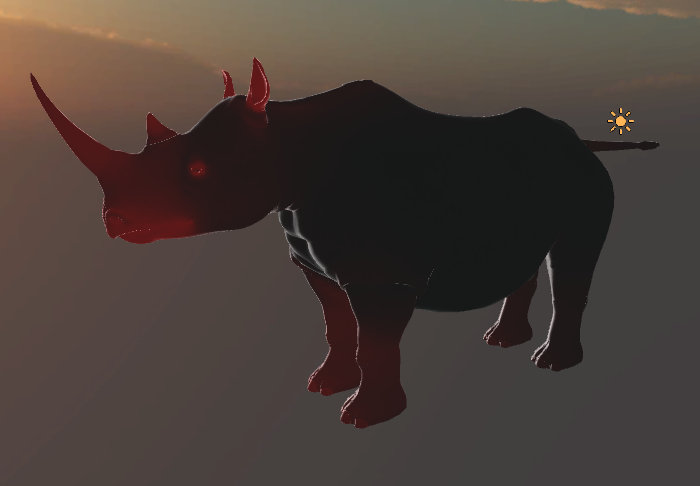This translucent technique is designed for objects that are thicker than leaves or paper. It is based on this technique as described in DICE’s 2011 GDC demo and it shares a lot of the same techniques as the Crytek translucent technique. In fact, the only major difference that I gathered was that they implemented a normal distortion factor, allowing them to bend the translucency. Other than that it is essentially the same shader code wise.They did mention making use of an inverted Ambient Occlusion map, baked with reversed normals to calculate a thickness map, which is used in place of the transmission alpha in the flat translucency. To test this out, I baked out a quick Inverted AO map of the rhino that comes with zbrush. I chose it because it had a good amount of variance between thick and thin areas. The results aren’t bad – thin areas like the ears and horn are translucent while thick areas like his belly are not. I would recommend baking with 3ds Max as it seemed the easiest to get to work correctly with inverted normals. This page has some good info on setting up the bakes.
